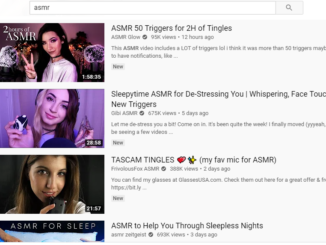
The topic is the rise in eating disorders among younger people and how advertising of different diets triggers young people. As a non-Australian, the Australian way of advertising health stars, calorie intake and the massive supply of diet services stands out from other countries. But how does this communication affect young people and what are their views on body and mental health?
The narrative genre will be a commentary with my own thoughts and experiences included in the piece. The Target group is mostly young adults, but it can also be people with eating disorders or that find the topic of body inclusivity/health interesting.
It can be targeted towards Health and wellbeing magazines such as:
But also towards digital outlets such as:
- https://www.crikey.com.au
- https://theconversation.com/au.
- Even faculty-outlet such as https://www.salienceatsydney.org

Story
According to the national charity Disorder Butterfly Foundation, over 1 million Australians are living with an eating disorder, and the number is growing. And Amber Schultz just wrote a piece in Sydney Morning Herald about the topic and highlighted that between 2008 and 2018 children with eating disorders nearly doubled, which clearly showcases that the development is not going in the right direction. Even the award Australian Person of the Year 2023 went to the body-positive advocate Taryn Brumfit, which is known for her work with mental and body health and her organisation Body Image Movement. Add to that, Australia is one of the countries with the most obese people in the world, making the question of obesity, body health and eating disorder a burning topic for Australians.
A lot of people are even drawing parallels between the rise in eating disorders and the growth of social media. But have not celebrities, models and movie stars always been thin and fit? One could argue that magazines in the 80s or 90s were equally good at highlighting the well-trimmed summer body and new shocking weight loss methods.
As an international student trying to navigate Sydney, I quickly became fascinated by how the supermarkets label their products with “health stars” and how the restaurants show the calorie intake per portion versus how much a daily intake is “suppose to be”. And at the same time, there are companies promoting weight loss apps, programs and services everywhere on TV, Billboards, the internet and social media. So why do Australians want to embrace body inclusivity and healthy body standards but at the same time always trigger people to think about how much they eat, what they eat and that losing weight is just an app download away? And how does this affect young adults today and what are their thoughts?
Transcript Example
Hello, this is an example of a transcript that can be of use
People interviewed can be young adults in Australia and how they perceive the different messaging and marketing towards weight loss or weight control. Ideally, also someone with an eating disorder, or recovering from one, could shine a light on his or her experience. To get another viewpoint on the topic a doctor or nutritionist could give a professional opinion and that does not necessary need to be an interview, it could also be through a comment.
Regarding multimodality, I hope to find some ways to elaborate on all three multimedia aspects, such as audio, photo and video. Statistics and data could be showcased with infographics made in tools such as Canva. Mostly I will be using copyright-free images from Unsplash and similar. But also own photos and material.





Hi Rusmus,
I think you have discovered a good news topic, the health star rating on the products and the calorie count on the menu also caught my attention and did change my shopping habits.
I do appreciate the angle of your story, starting with the current state of national health in Australia is a good choice. And it would be better to add some searches such as covering the origin of the Health Star Rating system as your supporting background information.
One small suggestion for the interviewees, I think you could refine the interviewees into different groups, such as locals and non-locals. As locals who have been used to health promotion for a long time, would their perceptions be the same as some non-locals who are new to this information? It would also be a good idea to pay more attention to the different definitions of health among young people in different countries and geographic areas (which might include some different determinations of body image anxiety, such as a preference for a voluptuous body or an obsession with a skinny body).
All in all, great job! Can’t wait to see your final story!